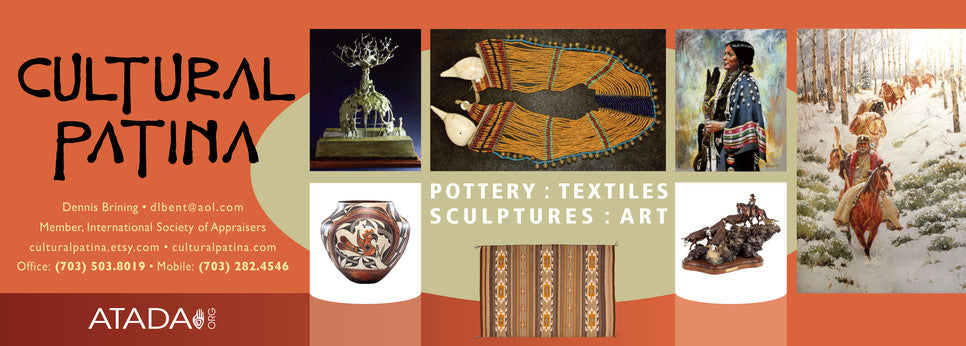
Effigy : Reproduction Casas Grande Hohokam Male effigy Jar #188
$ 2,412.00
Reproduction Casas Grande Hohokam Make Effigy
188. Description: 6 x 7 inches Reproduction Casas Grande Hohokam Male Effigy Jar has some crazing, good old specimen.
Hohokam culture, prehistoric North American Indians who lived approximately from AD 200 to 1400 in the semiarid region of present-day central and southern Arizona, largely along the Gila and Salt rivers. The term Hohokam is said to be Pima for those who have vanished. The culture is customarily divided into four developmental periods: Pioneer (AD 200-775), Colonial (775-975), Sedentary (975-1150), and Classic (from approximately 1150 to sometime between 1350 and 1450).
During the Pioneer Period the Hohokam lived in villages composed of widely scattered, individually built structures of wood, brush, and clay, each built over a shallow pit. They depended on the cultivation of corn (maize), supplemented by the gathering of wild beans and fruits and some hunting. Although floodwater irrigation may have been practiced earlier, it was during this period that the first irrigation canal was built a 3-mile (5-km) channel in the Gila River valley that directed river water to the fields. The Hohokam's development of complex canal networks in the following millennium was unsurpassed in pre-Columbian North America; this agricultural engineering was one of their greatest achievements. During the Pioneer Period they also developed several varieties of pottery.
During the subsequent Colonial Period, Hohokam culture expanded to influence all of what is now the southern half of Arizona. Village architecture changed little, except for the addition of ball courts similar to those of the Maya. Cotton was added to corn as a major crop, and irrigation canals proliferated; the Hohokam began to make canals narrower and deeper in order to minimize water loss through ground absorption and evaporation. Pottery improved, becoming thinner and stronger, and styles were borrowed from neighboring peoples.
The Hohokam area of occupation reached its maximum geographic extent during the Sedentary Period. Villages continued to consist of collections of pit houses, which had become slightly better-reinforced. During this period a few villages were surrounded by walls, and platform mounds made their first appearance. Corn and cotton were cultivated with ever more extensive irrigation systems. A major technological achievement was the casting of copper bells in wax molds.
The Classic Period of Hohokam culture is notable for the peaceful intrusion of the Salado tribe, a branch of the Ancestral Pueblo (Anasazi) culture. They came from the upper reaches of the Salt River, lived in Hohokam territory for several decades, then withdrew and disappeared. The principal effect of their presence is revealed in the advent of Pueblo architecture in Hohokam territory. Great multiple-storied community houses with massive walls of adobe began to be built, along with the older, more easily constructed pit houses; some houses were also built on top of platform mounds.
The art of basketry was added to that of pottery, bean and squash production was added to that of corn, and subsistence agriculture continued to be supplemented by game and wild plant foods. Networks of irrigation canals reached their greatest extent and complexity during this period: some of the more than 150 miles (240 km) of canals in the Salt River valley were renovated and put back into use in the 20th century.
The Hohokam people abandoned most of their settlements during the period between 1350 and 1450. It is thought that the Great Drought (1276-1299), combined with a subsequent period of sparse and unpredictable rainfall that persisted until approximately 1450, contributed to this process. The later occupants of the area, the Pima and Tohono odham (Papago), are thought to be the direct descendants of the Hohokam people. (Encyclopedia Britannica, 2013)




